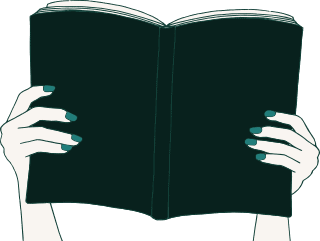Can or should authors only write books for children if they themselves are still young or childlike enough? And when is ‘old’ still considered ‘young enough’? In the book Hoe oud is jong? (How old is young?), Vanessa Joosen advocates for greater awareness of the concept of age as a social construct. She provides insight into important views and theories within age studies and how they interact with societal visions on age and ageing. In doing so, she uses and encourages an open view of age norms and encourages constructive dialogue between people of different ages and generations. For this book, she interviewed twelve British, Flemish, and Dutch authors who have written books for both young and old readers, and who moreover released their debuts at a very young age or have had long writing careers: David Almond, Aidan Chambers, Anne Fine, Ed Franck, Guus Kuijer, Bart Moeyaert, Aline Sax, Hilde Vandermeeren, Joke van Leeuwen, Edward van de Vendel, Jacqueline Wilson, and Anna Woltz. Based on these conversations, Vanessa Joosen tackles the question of how these authors manage or have managed to bridge that (perceived) distance between young and old.
Joosen, Vanessa. Hoe oud is jong?
Letterwerk, 2022.
Tagged age author, Aline Sax, Anna Woltz, Anne Fine, Bart Moeyaert, David Almond, Ed Franck, Edward van de Vendel, Guus Kuijer, Hilde Vandermeeren, Jacqueline Wilson, Joke van Leeuwen
Dreams can function in children’s books as a means to connect young characters and older figures in the story. In this article, Vanessa Joosen presents three methods to study intergenerational encounters in and through dreams in a selection of contemporary Dutch children’s books. She does this by means of a digital analysis of a corpus of 81 books to shows that the older the characters are, the less they are described as dreaming. Next, a close reading of intergenerational dreams lays bare, amongst others, the associations of dreaming with healing and death. Finally, a reader response study reveals that young children already understand some dream mechanisms and that older readers sometimes may draw on Freudian theory to interpret dreams, but that some also resist that.
Joosen, Vanessa. ‘Encounters of a Dreamy Kind: Dreams as Spaces for Intergenerational Play and Healing in Dutch Children’s Literature’.
Traum und Träumen in Kinder- und Jugendmedien, edited by Iris Schäfer, Brill, 2023, pp. 35–49.
doi: 10.30965/9783846767481_003
Age determines the form and content of children’s books in many ways. People havexed ideas about what is suitable for a particular age and what is not, and digital tools can help to map and ask questions about such age norms on a large scale. For this project, the computer ‘read’ 32 Dutch-language children’s books published between 1975 and 2018, and it appears that explicit comments are often made about age in children’s books. Not only do we pay attention to childhood in the project, other life stages are explored as well. It seems that children’s books guard age norms the most, but these comments are often coloured by conflicts, humour, and irony.
Joosen Vanessa. ‘Te kinderachtig voor de kinderen? Leeftijdsnormen in jeugdliteratuur digitaal onderzocht’.
Vooys: tijdschrift voor letteren, vol. 37, no.3, 2019, pp. 1–9.
